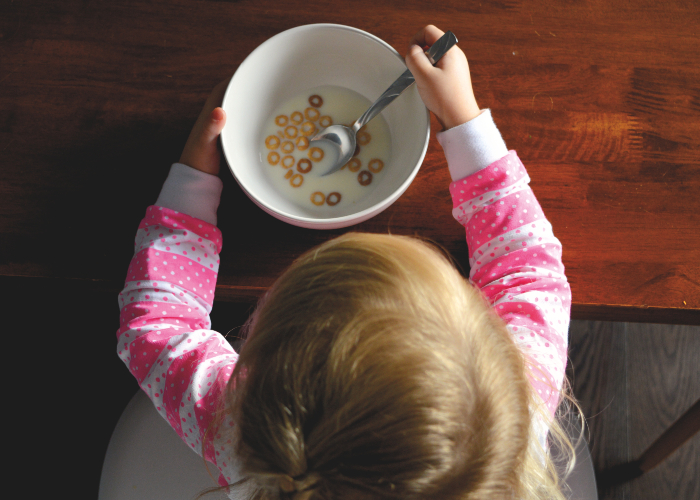If you naturally tend to worry, becoming a parent can absolutely push you over the edge. Every single detail of your child’s health and development can turn into a mountain to climb. And child nutrition is not an exception, especially considering the huge amount of media attention dedicated to child obesity, allergies or nutritional shortcomings.
I was not immune to the intense panic generated by choosing what/how/how much to feed my children, especially when I was deeply entrenched in chronic dieting and ‘biohacking’ my body into… not dying (haha, like that’s an actual thing). As I approached recovery and aimed to model a balanced relationship with food to my kids, it dawned on me that a lot of the habits I implemented at mealtimes were total replicas of the ones I myself had seen modeled by my parents growing up. Since this was all I knew and it was tainted by my personal emotional journey, it was difficult for me to establish what worked well and what didn’t.
So I decided to dig into this topic, and to find out what I could do as someone who’s had a troubled relationship with food throughout her adult life, but also as an average cook and as a working mom, in order to encourage a happy, relaxed, trustworthy relationship with food in my children. I was lucky to be directed towards Registered Dietitian and Family Therapist Ellyn Satter by a friend and I picked up her ‘Secrets of feeding a healthy family’ book.
This book truly changed my outlook and relieved so much anxiety around feeding my children, with just ONE powerful statement: ‘The most reprehensible meal is better than no meal at all!’ [i]
What does that mean? It means that above ANY nutritional advice, raising happy and confident eaters starts with STRUCTURE: scheduling trustworthy times where the whole family sits together to share a meal. Day in, day out. It is actually one of the cornerstones of mind body nutrition coaching, that I apply with my adult clients, because respecting our natural eating rythm, the instinctive way humans need to sit down and eat every few hours, can yield powerful results in reaching your natural metabolism, where your body effortlessly assimilates nutrients, builds muscle, regulates appetite and burns calories. But when it comes to families, it is even more powerful…
“Research shows that children who have family meals tend to eat more fruits, vegetables and consume less soda or fried foods. Moreover, teens who have regular meals with a parent are better adjusted emotionally and socially, have better grades and go further in school.” [ii]
This simple concept lifted a huge weight off my shoulders as a mom:
- It allowed me to distance myself from the fearmongering and the internalised dialogue about what I should or should not feed my children.
- It made the need to repeat ‘please have one more bite’ irrelevant.
- It reminded me that whether all I could manage was frozen pizza because I had no time to go to the grocery store or whether one day we might face food scarcity; by sitting down as a family to eat, I could still show to my children it is essential to make appropriate time to feed oneself in a reliable, secure fashion.
- Family meals demonstrate to my kids they are my absolute priority, family meals remind them they can count on me to provide undivided attention at regular times during the day. Family meals reassure them that food will appear on the table every few hours, and because of this, there is no need to go crazy around food.
Because, think about it: on the days that you have been grazing instead of having structured mealtimes, or days where you let hunger surprise you out of the blue and had no plans to feed yourself every few hours, what foods will you typically reach for? Nutritionally-dense foods or highly palatable, comfort foods? Pretty sure you know the answer.





